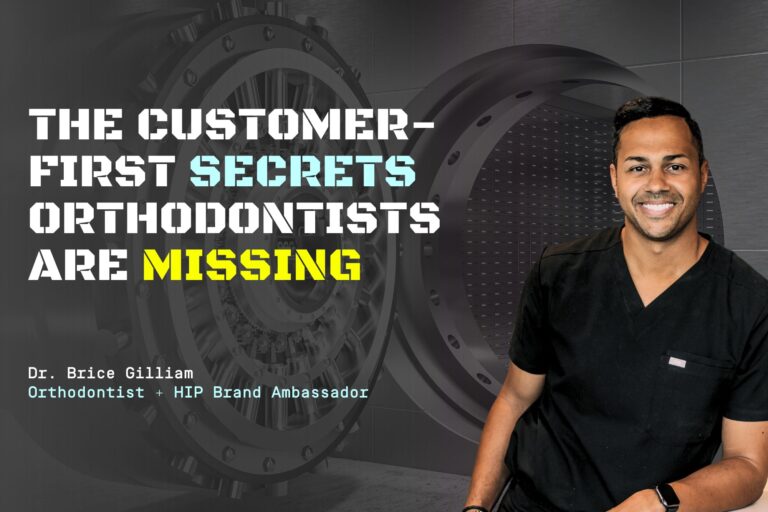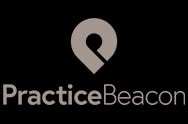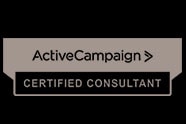Subscribe: RSS
Welcome again to another episode of The GrowOrtho Podcast! In today’s episode, we listen to a presentation by Harrison Bagdan, Senior Practice Advisor for HIP Creative, from his lecture at the AAO meeting in Miami. Listen up as Harrison discusses how to capitalize on new patient opportunities—and avoid “bad” leads—in the current environment.
Some key points you’ll take away from this lecture include:
- A common pattern (what he calls a “red flag”) that Harrison observes among orthodontic practices with lackluster marketing results
- An eye-opening study from the Harvard Business Review underscores why it’s so important to “get to our [patients] in five minutes or less”
- What Harrison means by being persistent and nurturing
- Important insights Harrison and the HIP team gleaned from client case studies and secret shopping exercises
- HIP Creative’s infamous “72-hour rule” and why this is an essential process for promoting conversion
- How practices can use software, like HIP Creative’s PracticeBeacon, to optimize patient follow-up and actually put successful conversion processes to work
- Why mindset matters when it comes to winning in digital marketing
Harrison and the rest of the team at HIP Creative currently consult with 120 practices across the country, the vast majority of which are in the orthodontics industry. Through their expertise in digital marketing (honed through thousands of hours of practice, Harrison adds, in a nod to the “10,000-hour rule” of mastery, as described by Malcolm Gladwell in Outliers), they’ve been able to help many of these practices double their production—or more—within one year.
The operative word here, of course, is many, not all. At one point, Harrison notes, “10 percent of our partners were making 90 percent of the revenue being generated.” This drove Harrison and the HIP team to ask:
Why?
Why do some practices see such amazing success while others don’t, even if the latter practices have access to similar resources, including HIP Creative’s versatile, yet tried-and-true, digital marketing framework?
As Harrison attempted to answer that question, he quickly noticed an interesting pattern among clients who weren’t seeing significant results from their marketing efforts. Overwhelmingly, these clients had the perception that digital marketing “didn’t work” and that their would-be patients from Facebook ads and the like were “bad” leads (thing frequent no-shows and low conversion rates).
But Harrison has a different perspective. Starting from the presumption that these “bad” leads were actually symptoms of something awry, what he wanted to know, was the root cause? He cites a recent study from the Harvard Business Review on behavior patterns with digital opportunities as a possible explanation.
This study essentially found that if you don’t follow up with a digital lead within five minutes, and, instead, wait 10 minutes before attempting to make first contact, then you effectively decrease your odds of getting in touch with someone by a whopping 400 percent.
And as important as that first contact is, the research shows that being persistent in your follow-up is just as crucial. “If we don’t follow up [with a potential patient] at least six times,” Harrison says, “we lose another 70 percent chance of getting that patient in.”
With this in mind, is it any surprise that HIP Creative’s most successful clients do these things exceptionally well?
Thanks to some secret shopping and client case studies, it became glaringly obvious to Harrison and his team that the practices experiencing the most growth were calling people quickly, following up persistently, AND getting people into the office as soon as possible, too. HIP Creative’s highest-performance clients treat every potential patient “like the most important person in the world.”
Ultimately, Harrison argues that digital marketing is a tool that absolutely works… provided you know how to use it. And this comes done to a few simple things: having a good framework in place (he offers a sneak peek of the basic framework HIP Creative uses); IMPLEMENTING that framework appropriately with strategic processes, protocols, and technology; and, above all else, focusing on the “front end” aspect of patient acquisition: customer service.
Great customer service is a “mindset,” Harrison says, and he advises practice owners to look at their “mindset and philosophy” before writing off digital marketing as a tool that “doesn’t work.” It could just be that a change in perspective is needed.










